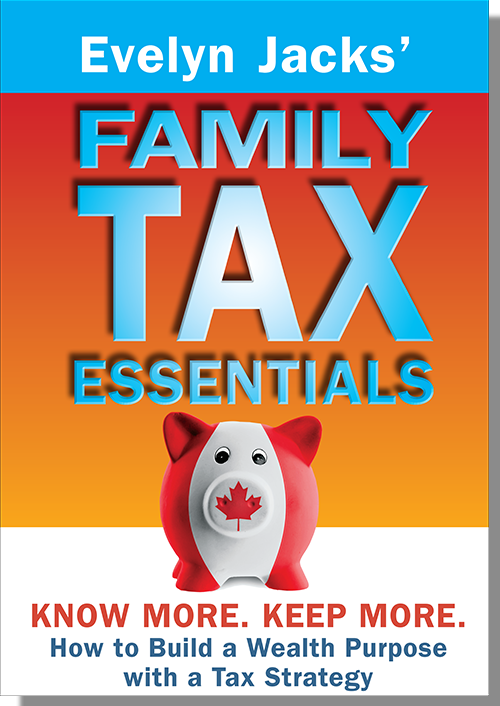Last updated: February 23 2016
RRSPs: Pay Attention to Leap Year & Earn Lucrative Refundable Tax Credits
Many people don’t understand one of the most fundamental reasons to file a tax return: claim lucrative refundable tax credits. It’s especially important for families that qualify for the Canada Child Tax Benefit, which is expected to be enhanced this July.
If you don’t do your RRSP planning now and contribute to your RRSP by this year’s deadline of February 29, it can cost you a loss of monthly benefits income from the CCTB throughout the period July 2016 to June 2017.
Remember, your eligibility for these credits depends on your family net income level, and that’s where the RRSP comes in. It will reduce your family income to produce more in monthly Child Tax Benefits or other refundable credits, described below.
Unfortunately, the actual amount you may receive by claiming refundable credits is not very obvious on the tax return; in fact, the amounts you qualify for are not listed on the return. That’s too bad, as it makes planning more difficult for taxpayers. It’s true, the calculations can be quite onerous; so CRA does the calculations for you once your family tax returns are filed.
Your Tax Services Specialist can help to identify the amounts for you before you actually file; more importantly, this professional can help you understand the difference an RRSP can make in your monthly benefit receipts. Alternatively, you can access the Knowledge Bureau Income Tax Estimator to help you with your planning.
 |
There are three important refundable tax credits from the federal government; in some cases, provincial governments may also provide similar income supports.
1. The Canada Child Tax Benefit. This lucrative tax benefit is paid monthly, to parents with certain net income levels. Application for this credit generally happens upon the birth of a child. Many provinces supplement the Child Tax Benefit for their residents. These provincial supplements are included with the cheque/direct deposit received from the federal government. Starting in July 2011, each parent who lives with the child in the case of separated families, can receive 50% of any GST/HST Credit and Child Tax Benefits.
Starting in July 2016, the calculation of this credit will depend on the age of the child and parents can expect to receive a substantially different amount for the July 2016 to June 2017 benefit year. Your income tax preparer will be able to tell you how much to expect when you file your return.
2. GST Credit. The GST/HST Credit and Canada Child Tax Benefit are based on a July to June “benefit year” based on net income. You are eligible to receive the GST credit if you are at least 19 and a resident of Canada at the time the payment is due. So, you’ll want to file a tax return if you will be 19 by April 30, 2017, to start receiving it after your 19th birthday, as it is paid quarterly. A GST credit can also be claimed for your child, but specifically not for a foster child.
 |
3. Working Income Tax Benefit. The WITB is designed to offset, in part, the high effective marginal tax rates that low income earners experience when their income increases as they go back to work. That’s due to the withdrawal of income support programs.
To mitigate the effect of those clawbacks, lower earners can receive some relief from these real dollar affects. This credit is calculated as 25% of earned income in excess of $3,000 (for most provinces), that is, the total of employment and business income (ignoring losses).
To receive it, you must complete Schedule 6 on your return, be at least age 19 or have a child, and earn a minimum amount of net income. If you are single and your net income is under certain clawback thresholds, you’ll receive a maximum credit of $1,015 in most provinces; $1,844 if you have a family. An additional supplement of $508 is available to disabled taxpayers.
The WITB may be claimed by either spouse (or common-law partner) but only one spouse may make a claim for the family. Families may request a pre-payment of up to one-half of their expected WITB. These payments will be issued quarterly in April, July, October and January.
The WITB cannot be claimed by full-time students unless they had an eligible dependant during the year, by part-time residents (i.e. newcomers) or by persons confined to a prison or a similar institution for at least 90 days in the year.
Remember, even if your income is zero, you should file a tax return to benefit from the GST/HST Credit. In addition, there are numerous provincial refundable tax credits you may be able to benefit from as well.
Evelyn Jacks is a best-selling Canadian author of 52 books including her latest, Family Tax Essentials. Evelyn is the Founder and President of Knowledge Bureau, a national educational institute. To learn more about professional tax preparation and tax-efficient wealth management, see www.knowledgebureau.com.
Additional Educational Resources: Family Tax Essentials by Evelyn Jacks and DFA-Tax Services SpecialistTM program.





